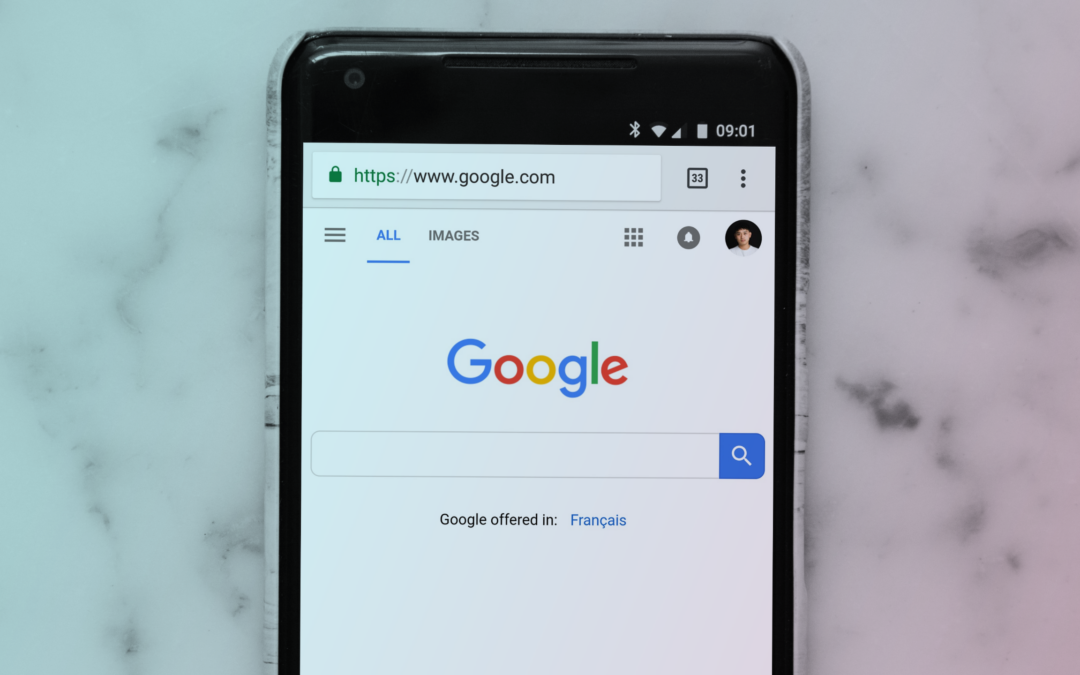In the world of e-commerce, optimizing product titles and descriptions is crucial for achieving success. These elements play a fundamental role in product visibility on search engines and user purchasing decisions. In this article, we will explore the importance of optimizing titles and descriptions in an e-commerce store and how this practice can positively impact the performance of your online store.
Utilize relevant keywords
One of the key aspects of optimizing titles and descriptions is the use of relevant keywords. Here are two key points related to this topic:
Identify the most relevant keywords for each product
Before you start optimizing your product titles and descriptions, it’s important to conduct thorough keyword research. Identify the words or phrases that users most frequently use when searching for products similar to yours.
There are keyword research tools such as Google Keyword Planner that can help you find the most relevant keywords for your industry. Additionally, you can analyze the keywords used by your successful competitors to gain additional insights.
How to strategically include keywords in titles and descriptions
Once you have identified the relevant keywords, it’s time to strategically include them in your product titles and descriptions. Here are some tips to do it effectively:
- Place the most important keywords at the beginning of the title and description.
- Use variations of keywords to avoid repetition.
- Ensure that keywords are seamlessly integrated into the content, without appearing forced or artificial.
- Optimize the length of titles and descriptions to display correctly in search results and be attractive to users.
By including relevant keywords in your titles and descriptions, you increase the likelihood of your products appearing in search results and attract a more specific and receptive audience.
Write compelling and persuasive titles
When it comes to product titles, capturing users’ attention from the outset is crucial. Here are some effective techniques for creating attention-grabbing titles:
3 Techniques for creating attention-grabbing titles
- Use of relevant keywords: Incorporating relevant keywords in titles helps improve visibility in search engines and attract users interested in that type of product.
- Incorporation of numbers and specific data: Numbers and specific data attract attention and generate confidence in users. For example, “10% discount,” “Free 24-hour shipping,” or “5-star rating.”
- Use of action and power words: Action and power words create a sense of urgency and motivate users to take action. Some examples are “Discover!”, “Buy now,” “Limited offer.”
How to use persuasive language in titles
In addition to being attractive, titles should also be persuasive and descriptive to pique users’ interest. Some effective strategies include:
- Highlighting the benefits and solutions offered by the product: Instead of simply describing the product, focus on highlighting how it can improve the user’s life, solve a problem, or fulfill a need.
- Creating a sense of urgency and scarcity: Use terms like “limited-time offer,” “limited stock,” or “last few units available” to generate a sense of urgency and motivate users to take action.
- Personalizing titles according to the target audience: Know your audience and adapt the titles to resonate with them. Use language that is familiar to them and speaks directly to their needs and desires.
Improve the structure of descriptions
In addition to titles, product descriptions also play an important role in users’ purchasing decisions. To optimize descriptions and facilitate reading, it’s essential to consider two key aspects: information organization and the use of bullet points and short paragraphs.
Clear and concise organization of information
The information in descriptions should be organized in a clear and concise manner so that users can quickly understand the product’s features and benefits. Some best practices include:
- Use descriptive subheadings: Divide the description into sections with subheadings that highlight specific aspects of the product, such as “Key Features,” “High-Quality Materials,” or “Usage Instructions.”
- Highlight key features at the beginning: Place the most important and attractive features of the product at the beginning of the description to immediately capture the user’s attention.
- Organize information logically: Organize the information logically and sequentially so that users can easily follow the flow of the description and find the information they are looking for.
Use of bullet points, bullet points, and short paragraphs
The use of bullet points and short paragraphs helps improve readability and facilitates understanding of the information. Some recommendations include:
- Facilitate reading and scannability of descriptions: Users often scan descriptions for relevant information. Use bullet points to highlight key points and make the information easier to digest.
- Highlight key points using bullet points: Use bullet points to list key features, key benefits, or highlights of the product. This allows users to quickly identify the most relevant aspects.
- Avoid long and dense paragraphs: Divide the content into short paragraphs and avoid long blocks of text. This helps prevent users from feeling overwhelmed and facilitates reading on mobile devices.
Highlight Features and Benefits
In addition to the structure of descriptions, it’s important to highlight the features and benefits of the products to persuade users and help them make an informed buying decision. Here are some effective strategies:
Highlight unique features of each product
Each product has unique features that differentiate it from others in the market. It’s important to highlight these features to capture users’ attention and show them why your product is special. Some recommendations include:
- Mentioning relevant materials, dimensions, or specifications: If your product uses high-quality materials, it’s important to mention it. You can also highlight dimensions or technical specifications that are relevant to users.
- Highlighting differentiating factors from the competition: Does your product have any features that set it apart from the competition? It could be a unique design, an additional function, or any other aspect that makes your product stand out.
Explain benefits and advantages for the user
In addition to highlighting features, it’s essential to explain how those attributes benefit the user. Some effective strategies include:
- Emphasizing how the product meets needs or solves problems: Identify the common needs or problems of your target audience and show how your product can meet those needs or provide solutions.
- Highlighting tangible and intangible benefits offered: In addition to tangible benefits such as time or money savings, also highlight intangible benefits such as convenience, well-being, or lifestyle.
- Using testimonials or reviews to support the mentioned benefits: Add testimonials or reviews from satisfied customers that support the mentioned benefits. This increases user confidence and reinforces the selling points.
Optimize SEO for Titles and Descriptions
In addition to capturing users’ attention, it’s important to optimize titles and descriptions for search engines. Some key considerations include:
- Including relevant keywords: Identify the most relevant keywords for your product and make sure to include them in both the title and description. This helps improve visibility in search engine results.
- Avoiding keyword stuffing and maintaining naturalness: While it’s important to include keywords, avoid overdoing it and ensure that the content reads naturally and appealingly to users.
- Using meta tags to optimize the display in search engines: Take advantage of meta tags, such as the title tag and meta description, to summarize and optimize the display of your products in search engine results.
To maximize the visibility and effectiveness of your products in an eCommerce platform, it is essential to use specialized tools that allow you to optimize titles and descriptions. One of the best solutions is the Feed Optimizer, which facilitates the creation of improved product feeds for your marketing campaigns. This tool not only helps you increase sales but also reduces acquisition costs by making your products more attractive and easier to find for potential customers.
Conclusion
In this article, we have explored five effective ways to optimize titles and descriptions for products in an e-commerce store. Implementing these strategies can make a difference in terms of visibility, customer attraction, and conversion. Let’s briefly recap each of these methods and highlight the importance of applying them to your online business.
- Conduct keyword research: Using specific tools to find relevant keywords is essential. These tools will help you discover the most searched words and phrases by your potential customers, allowing you to effectively tailor your product titles and descriptions.
- Include keywords strategically: Once you have identified the relevant keywords, it’s important to incorporate them strategically into the titles and descriptions. However, avoid keyword stuffing and maintain a natural and coherent approach to avoid affecting readability and user experience.
- Use persuasive and descriptive titles: Titles should be attractive and persuasive to capture users’ attention, but they should also be descriptive to provide a clear idea of the product. Find the right balance between persuasion and precise information to generate interest and trust in your products.
- Consider synonyms and variations: In addition to the main keywords, consider using relevant synonyms and variations in titles and descriptions. This will broaden your reach and allow your products to be found through a wider range of searches.
- Optimize length and structure: Both titles and descriptions should be concise and direct, yet informative enough. Avoid long and heavy texts that may overwhelm the reader. Use short paragraphs and highlight the most relevant and attractive aspects of the product.
Optimizing titles and descriptions in an e-commerce store is essential for standing out in a competitive market. By applying these five methods, you will enhance the visibility of your products, attract potential customers, and increase conversion possibilities.
Frequently Asked Questions about optimizing titles and descriptions in an e-commerce store
- What tools can I use to find relevant keywords?
There are various tools such as Google Keyword Planner, SEMrush, or Ahrefs that can help you find relevant keywords for your products. - How many keywords should I include in a product title or description?
There is no specific number, but it’s advisable to use relevant keywords naturally and coherently in titles and descriptions. - Should I prioritize persuasive aspects over descriptive ones in titles?
It’s important to find a balance between persuasive and descriptive elements in titles to capture attention and provide accurate product information. - Is it recommended to use synonyms of keywords in titles and descriptions?
Yes, using relevant synonyms and variations can broaden your reach and attract a greater number of users. - What is the ideal length for product titles and descriptions?
Titles and descriptions should be concise and direct, providing the necessary information without overwhelming the reader. Maintain an appropriate length to keep the user’s attention. - How can I effectively highlight product features?
Highlight key features of the product using bullet points, bolding, or highlighting to make them easily identifiable for users. - Should I include technical information in product descriptions?
It depends on the type of product and your customers’ expectations. If technical information is relevant for the purchase decision, include it clearly and comprehensibly. - What metrics should I analyze to evaluate the effectiveness of optimization?
You can analyze metrics such as organic traffic, bounce rate, session duration, and conversions to evaluate the effectiveness of your titles and descriptions. - How often should I update product titles and descriptions?
It’s advisable to regularly review and update titles and descriptions to keep them relevant and aligned with changes in trends and user demand. - Are there services or tools that can help me optimize titles and descriptions in my e-commerce store?
Yes, in addition to the keyword research tools mentioned earlier, you can also consider hiring SEO or copywriting experts to effectively optimize your product titles and descriptions.
The fastest monitoring and dynamic pricing platform worldwide
Boardfy allows you to monitor your competitors or distributors, make automatic price changes, optimize your Google Shopping campaigns, and much more.
7-days free trial. No credit card required.








